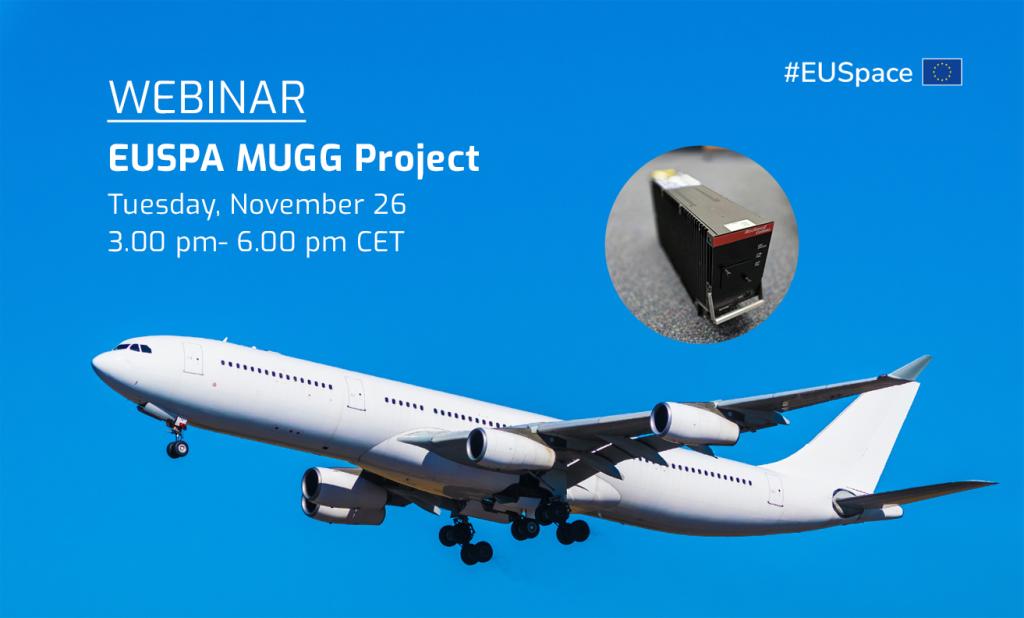MUGG and the optimization of aviation navigation with Galileo and DFMC EGNOS

As global air traffic intensifies, the demand for more accurate, reliable, and resilient navigation systems becomes crucial. The EU-funded project, MUGG, managed by the European Union Agency for the Space Programme, addresses this need by developing advanced dual-frequency, multi-constellation (DFMC) satellite-based augmentation system (SBAS) receivers. By leveraging signals from both GPS and Galileo constellations, this technology aims to significantly enhance position accuracy, system availability, and resilience against signal disruptions.
The project plays a vital role in shaping future aviation standards by contributing to the development and validation of EUROCAE ED-259 Minimum Operational Performance Standards. This involvement ensures that the MUGG innovations align with international regulatory requirements. The project seeks to enable more efficient flight paths, reduce fuel consumption, and minimize navigation-related delays, promising both economic and environmental benefits for the aviation industry.
The MUGG project has recently demonstrated the capabilities of the new DFMC Navigation modes using GPS + Galileo in the L1/L5 and E1/E5a frequencies. At the heart of the project is the development of the GLU-2100, an advanced receiver capable of processing signals from both GPS and Galileo constellations. This innovative device incorporates cutting-edge ARAIM and DFMC SBAS software to push the boundaries of positioning accuracy. The GLU-2100 receiver's design harnesses the power of multiple satellite constellations and sophisticated algorithms to enable a new era of performance-based navigation. By moving beyond traditional ground-based systems, the MUGG solution paves the way for more flexible, efficient flight paths and smoother cross-border operations.
Beyond hardware development, the project's scope extends to contributing to international aviation standards, actively supporting the evolution of MOPS through the ED-259 framework.
Comprehensive flight testing formed a crucial part of the project, verifying the system's performance across diverse operational scenarios. The MUGG receiver was tested in a variety of flight conditions using various flight plans in varying latitudes and RNP0.3 approaches down to LNAV minima, weather conditions and aircraft types. The receiver performed as expected in all conditions, demonstrating its safety and reliability, and confirming the benefits from DFMC, SBAS. The Flight Trials phase was performed with the objective to collect live GNSS signal, extract the outputs from the MUGG receiver prototype under flight conditions. For that purpose, four flight campaigns were organized in multiple locations with several aircraft operators. Rigorous in-flight testing was conducted on helicopter Augusta Westland AW169 operated by Babcock Scandinavian Air Ambulance, Cessna 182T EC-KOQ operated by the Barcelona-Sabadell Aeroclub, Piper Seneca PA-34 200 or Partenavia P68C operated by Grup Airmed. The testing has confirmed the technology's ability to deliver enhanced safety and reliability, marking a significant step forward in aviation navigation capabilities.
The MUGG project, and the EDG2E project, are notable as the only initiatives to achieve successful proof of concept through flight trials, even in scenarios with a limited number of GPS L1/L5 satellites available.
An online webinar is organised on November 26, 2024 from 3:00 pm to 6:00 pm to learn more about the advancements made by the MUGG project and discuss further the achievements in aviation navigation optimization.
The webinar aims to accomplish several objectives:
- Present Galileo and EGNOS V3, highlighting the specific advantages they offer to the aviation industry. This will provide attendees with valuable insights into the potential benefits of integrating these programs into aviation navigation systems.
- Showcase the MUGG project and share the outcomes of the recently completed flight trials using GLU-2100, Avionics Multi-Mode Receiver and implementing the next generation Dual Frequency Multi Constellation (DFMC).
- Engage the audience in a discussion about the advantages of the SBAS DFMC receiver for aviation. Attendees will have the opportunity to provide feedback and share their perspectives on the benefits of this technology.
- Introduce a vital role in shaping future aviation standards by contributing to the development and validation of EUROCAE ED-259 Minimum Operational Performance Standards (MOPS).
The webinar will provide a platform to discuss the results and their implications for the aviation sector providing confidence among stakeholders regarding the imminent availability of DFMC signals and receivers in aviation.
Media note: This feature can be republished without charge provided the European Union Agency for the Space Programme (EUSPA) is acknowledged as the source at the top or the bottom of the story. You must request permission before you use any of the photographs on the site. If you republish, we would be grateful if you could link back to the EUSPA website (http://www.euspa.europa.eu).